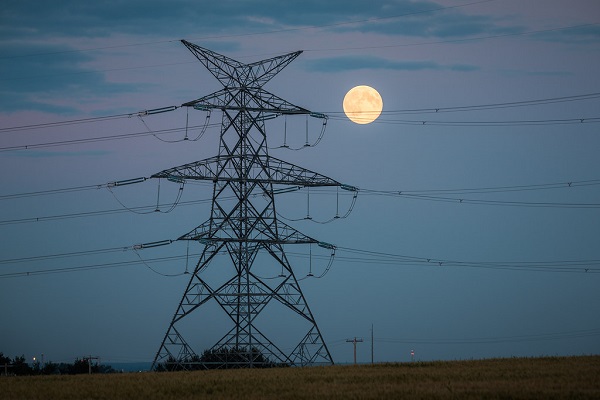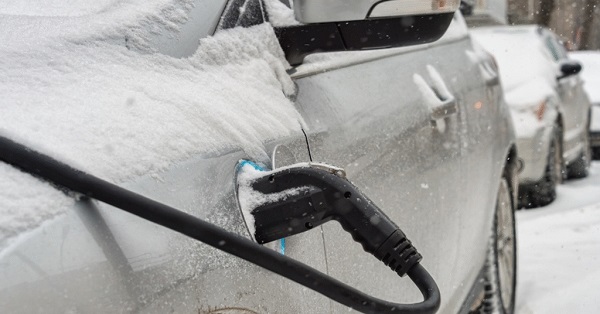Business
Feds move target for net-zero grid back 15 years. Western provinces say it’s not of their business

From Resource Works
“These latest measures fail to recognize provinces have jurisdiction over the development and management of electricity. The federal regulations are duplicative, inefficient, and add to costs.”
The federal government has clarified its clean-energy goal for a net-zero power grid.
Its final Clean Electricity Regulations target a net-zero grid across the country by 2050. But didn’t Ottawa previously, in August 2023, set a goal of 2035?
Certainly, one leading environmental group declared: “The federal government has committed to achieving zero-emissions electricity by 2035.”
And a law firm that analyses energy matters told followers in August 2023: “Government of Canada releases draft Clean Electricity Regulations aimed at achieving net-zero emissions from Canada’s electricity grid by 2035.”
What Ottawa said in August 2023 was this: “The proposed regulations would set performance standards that would ensure that the sector achieves significant transformation by 2035, so that a robust foundation of clean electricity is available to power the electric technologies (e.g., electric transportation) needed to support Canada’s transition to a net-zero GHG emissions economy by 2050.”
Announcing that 2035 goal was a case of fuzzy wording, according to Energy Minister Jonathan Wilkinson. He said Ottawa could have been more precise in its language and context around what exactly the 2035 target referred to.
He now says: “2035 was really having a plan as to how you were going to reduce emissions to be able to get to a net-zero economy by 2050… Perhaps we were not as precise with our language as we should have been.”
Environment Minister Steven Guilbeault issued an update in February 2024: “All G7 countries, including Canada and the United States, have committed to transitioning to a net-zero electricity grid as a foundational measure to help achieve low-carbon economies by 2050.”
And he now says: “We knew from the get-go, from where we are to where we need to be, we couldn’t get there in 10 years… It was always our intention that we want to see things happening before 2035. But that we wouldn’t be able to get to a decarbonized grid before 2050.”
Whatever they said, meant, clarified, updated, and/or corrected, the new regulations face opposition and a court challenge from Alberta, for one.
Premier Danielle Smith criticized the latest regulations as unconstitutional, arguing they seek to regulate an area of provincial jurisdiction.
“After years of watching the federal government gaslight Canadians about the feasibility of achieving a net-zero power grid by 2030, we are gratified to see Ottawa finally admit that the Government of Alberta’s plan to achieve a carbon-neutral power grid by 2050 is a more responsible, affordable, and realistic target.
“That said, the federal government’s finalized electricity regulations remain entirely unconstitutional as they seek to regulate in an area of exclusive provincial jurisdiction. They also require generators to meet unreasonable and unattainable federally mandated interim targets beginning in 2035, which will still make electricity unaffordable for Canadian families.
“Alberta will therefore be preparing an immediate court challenge of these electricity regulations.”
Saskatchewan’s government said in a news release that it will simply not comply with the new regulations.
“Our government unequivocally rejects federal intrusion into our exclusive provincial jurisdiction over the electricity system.
“Saskatchewan will prioritize maintaining an affordable and reliable electricity grid to support our regional needs and growth. The federal Clean Electricity Regulations are unconstitutional, unaffordable, unachievable, and Saskatchewan cannot, and will not, comply with them.”
The Business Council of BC slammed the new federal regulations on multiple grounds: constitutionality, jeopardizing the reliability of electricity delivery, higher costs for businesses and households, limiting investment, regional inequities, technological limitations, and risks to greenhouse-gas management.
“These latest measures fail to recognize provinces have jurisdiction over the development and management of electricity. The federal regulations are duplicative, inefficient, and add to costs.”
And: “It is important to recognize that Canada’s combined electricity systems are already 84% non-emitting, and that electricity represents less than 10% of Canada’s total emissions. The sector has made more progress in reducing emissions than any other sector in the country over the past two decades.
“We urge the government to set aside these new regulations and work collaboratively with the electricity sector to develop a more balanced approach that respects provincial roles and will not risk undermining investment and driving up costs. The path to a cleaner energy system requires cooperation, not regulation.”
The latest announcement from Ottawa includes these statements:
- “Federal analyses find that the Regulations have no impact on electricity rates for the vast majority of Canadians, and in some cases, will even have a slightly positive impact on rates. Independent third-party expert modelling substantiates federal analysis that the Regulations are feasible.
- “To ensure rates are affordable for Canadian families over the coming decade, the federal government is investing $60 billion to support the electricity sector.
- “The adoption of efficient electric appliances, vehicles, and heat pumps presents an enormous opportunity for families to save money on their energy bills.
- “In the shift to clean electricity, 84% of households are expected to spend less on their monthly energy costs, when accounting for the over $60 billion in federal clean electricity incentives. This could lead to $15 billion in total energy-related savings for Canadians by 2035.”
All subject to clarification, updating, and/or correction—and Alberta’s promised court case.
Alberta
A Christmas wish list for health-care reform

From the Fraser Institute
By Nadeem Esmail and Mackenzie Moir
It’s an exciting time in Canadian health-care policy. But even the slew of new reforms in Alberta only go part of the way to using all the policy tools employed by high performing universal health-care systems.
For 2026, for the sake of Canadian patients, let’s hope Alberta stays the path on changes to how hospitals are paid and allowing some private purchases of health care, and that other provinces start to catch up.
While Alberta’s new reforms were welcome news this year, it’s clear Canada’s health-care system continued to struggle. Canadians were reminded by our annual comparison of health care systems that they pay for one of the developed world’s most expensive universal health-care systems, yet have some of the fewest physicians and hospital beds, while waiting in some of the longest queues.
And speaking of queues, wait times across Canada for non-emergency care reached the second-highest level ever measured at 28.6 weeks from general practitioner referral to actual treatment. That’s more than triple the wait of the early 1990s despite decades of government promises and spending commitments. Other work found that at least 23,746 patients died while waiting for care, and nearly 1.3 million Canadians left our overcrowded emergency rooms without being treated.
At least one province has shown a genuine willingness to do something about these problems.
The Smith government in Alberta announced early in the year that it would move towards paying hospitals per-patient treated as opposed to a fixed annual budget, a policy approach that Quebec has been working on for years. Albertans will also soon be able purchase, at least in a limited way, some diagnostic and surgical services for themselves, which is again already possible in Quebec. Alberta has also gone a step further by allowing physicians to work in both public and private settings.
While controversial in Canada, these approaches simply mirror what is being done in all of the developed world’s top-performing universal health-care systems. Australia, the Netherlands, Germany and Switzerland all pay their hospitals per patient treated, and allow patients the opportunity to purchase care privately if they wish. They all also have better and faster universally accessible health care than Canada’s provinces provide, while spending a little more (Switzerland) or less (Australia, Germany, the Netherlands) than we do.
While these reforms are clearly a step in the right direction, there’s more to be done.
Even if we include Alberta’s reforms, these countries still do some very important things differently.
Critically, all of these countries expect patients to pay a small amount for their universally accessible services. The reasoning is straightforward: we all spend our own money more carefully than we spend someone else’s, and patients will make more informed decisions about when and where it’s best to access the health-care system when they have to pay a little out of pocket.
The evidence around this policy is clear—with appropriate safeguards to protect the very ill and exemptions for lower-income and other vulnerable populations, the demand for outpatient healthcare services falls, reducing delays and freeing up resources for others.
Charging patients even small amounts for care would of course violate the Canada Health Act, but it would also emulate the approach of 100 per cent of the developed world’s top-performing health-care systems. In this case, violating outdated federal policy means better universal health care for Canadians.
These top-performing countries also see the private sector and innovative entrepreneurs as partners in delivering universal health care. A relationship that is far different from the limited individual contracts some provinces have with private clinics and surgical centres to provide care in Canada. In these other countries, even full-service hospitals are operated by private providers. Importantly, partnering with innovative private providers, even hospitals, to deliver universal health care does not violate the Canada Health Act.
So, while Alberta has made strides this past year moving towards the well-established higher performance policy approach followed elsewhere, the Smith government remains at least a couple steps short of truly adopting a more Australian or European approach for health care. And other provinces have yet to even get to where Alberta will soon be.
Let’s hope in 2026 that Alberta keeps moving towards a truly world class universal health-care experience for patients, and that the other provinces catch up.
Business
Warning Canada: China’s Economic Miracle Was Built on Mass Displacement

If you think the CCP will treat foreigners better than its own people, when it extends its power over you, please think again: Dimon Liu’s warning to Canadian Parliament.
Editor’s Note: The Bureau is publishing the following testimony to Canada’s House of Commons committee on International Human Rights from Dimon Liu, a China-born, Washington, D.C.-based democracy advocate who testified in Parliament on December 8, 2025, about the human cost of China’s economic rise. Submitted to The Bureau as an op-ed, Liu’s testimony argues that the Canadian government should tighten scrutiny of high-risk trade and investment, and ensure Canada’s foreign policy does not inadvertently reward coercion. Liu also warns that the Chinese Communist Party could gain leverage over Canadians and treat them as it has done to its own subjugated population—an implied message to Prime Minister Mark Carney, who has pledged to engage China as a strategic partner without making that position clear to Canadians during his election campaign.
OTTAWA — It is an honor to speak before you at the Canadian Parliament.
My testimony will attempt to explain why China’s economic success is built on the backs of the largest number of displaced persons in human history.
It is estimated that these displaced individuals range between 300 to 400 million — it is equivalent to the total population of the United States being uprooted and forced to relocate. These displaced persons are invisible to the world, their sufferings unnoticed, their plights ignored.
In 1978, when economic reform began, China’s GDP was $150 billion USD.
In 2000, when China joined the WTO, it was approximately $1.2 trillion USD.
China’s current GDP is approximately $18 trillion USD.
In 2000 China’s manufacturing output was smaller than Italy’s.
Today it’s larger than America, Europe, Japan, and South Korea combined.
If you have ever wondered how China managed to grow so fast in such a short time, Charles Li, former CEO of the Hong Kong Stock Exchange, has the answers for you.
He listed 4 reasons: 1) cheapest land, 2) cheapest labor, 3) cheapest capital, and 4) disregard of environmental costs.
“The cheapest land” because the CCP government took the land from the farmers at little to no compensation.
“The cheapest labor,” because these farmers, without land to farm, were forced to find work in urban areas at very low wages.
The communist household registration system (hukou 戶口) ties them perpetually to the rural areas. This means they are not legal residents, and cannot receive social benefits that legal urban residents are entitled. They could be evicted at any time.
One well known incident of eviction occurred in November 2017. Cai Qi, now the second most powerful man in China after Xi Jinping, was a municipal official in Beijing. He evicted tens of thousands into Beijing’s harsh winter, with only days, or just moments of notice. Cai Qi made famous a term, “low-end population” (低端人口), and exposed CCP’s contempt of rural migrants it treats as second class citizens.
These displaced migrant workers have one tradition they hold dear — it is to reunite with their families during the Chinese Lunar New Year holiday, making this seasonal migration of 100 to 150 million people a spectacular event. In China’s economic winter of 2025 with waves of bankruptcies and factory closures, the tide of unemployed migrant workers returning home to where there is also no work, and no land to farm, has become a worrisome event.
Historically in the last 2,000 years, social instability has caused the collapse of many ruling regimes in China.
“The cheapest capital” is acquired through predatory banking practices, and through the stock markets, first to rake in the savings of the Chinese people; and later international investments by listing opaque, and state owned enterprises in leading stock markets around the world.
“A disregard of environmental costs” is a hallmark of China’s industrialization. The land is poisoned, so is the water; and China produces one-third of all global greenhouse gases.
Chinese Communist officials often laud their system as superior. The essayist Qin Hui has written that the Chinese communist government enjoys a human rights abuse advantage. This is true. By abusing its own people so brutally, the CCP regime has created an image of success, which will prove to be a mirage.
If you think the CCP will treat foreigners better than its own people, when it extends its power over you, please think again.
The Bureau is a reader-supported publication.
To receive new posts and support my work, consider becoming a free or paid subscriber.
-

 Agriculture1 day ago
Agriculture1 day agoWhy is Canada paying for dairy ‘losses’ during a boom?
-

 Automotive2 days ago
Automotive2 days agoFord’s EV Fiasco Fallout Hits Hard
-

 Alberta1 day ago
Alberta1 day agoAlberta’s new diagnostic policy appears to meet standard for Canada Health Act compliance
-

 Censorship Industrial Complex1 day ago
Censorship Industrial Complex1 day agoTop constitutional lawyer warns against Liberal bills that could turn Canada into ‘police state’
-

 Agriculture1 day ago
Agriculture1 day agoEnd Supply Management—For the Sake of Canadian Consumers
-

 Automotive2 days ago
Automotive2 days agoCanada’s EV gamble is starting to backfire
-

 Alberta1 day ago
Alberta1 day agoAlberta Next Panel calls to reform how Canada works
-

 Business22 hours ago
Business22 hours agoJudge Declares Mistrial in Landmark New York PRC Foreign-Agent Case








